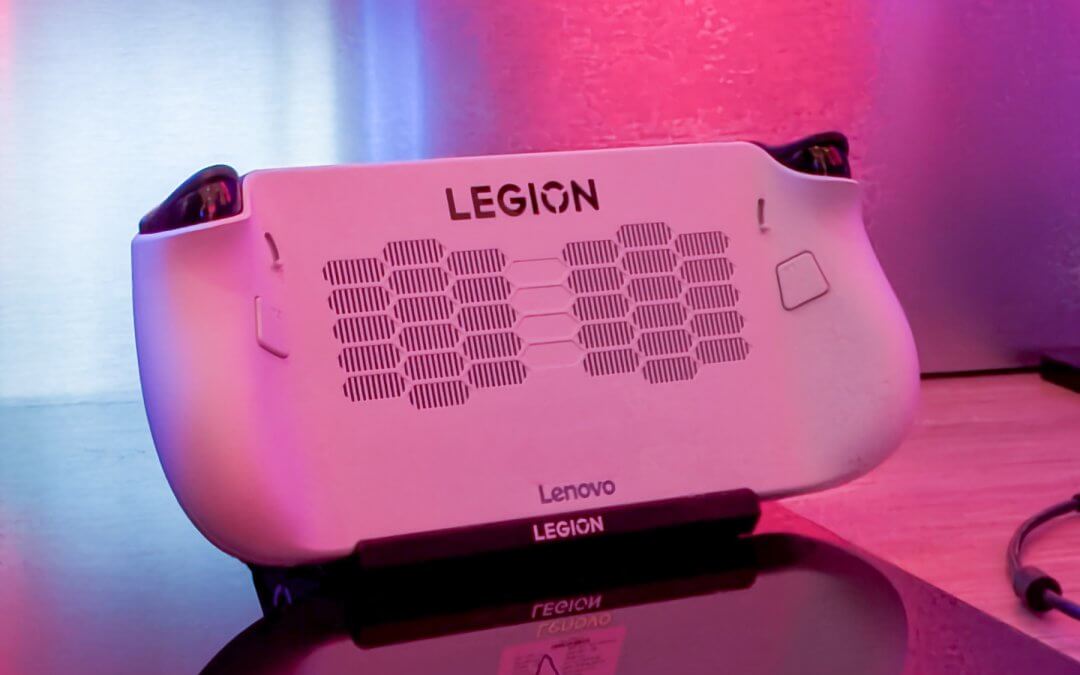There were no shortage of exciting announcements at CES 2025, but arguably the most exciting of them all was Lenovo officially introducing the Legion Go S. As part of a roundtable session, we were able to spend a bit of time with Lenovo’s upcoming handheld, and I have a few thoughts to share.
Not only that, but Lenovo had both the Windows and Steam versions of the Legion Go S on hand, along with a “prototype” of the Legion Go 2. While our time was pretty limited given the number of other attendees, there are a few things that might make the Go S your next x86 gaming handheld.
Design and Ergonomics
After a few minutes of trying to peek over the shoulders of others, I was able to snag one for myself. Right off the bat, the first thing that I noticed is just how light the Legion Go S felt to hold. It’s definitely not what I was expecting, given the sheer size of it, as it dons an 8-inch LCD display.
However, Lenovo seemingly put a bit of focus on the weight distribution so it doesn’t feel like you’re holding a slab of concrete with controllers. Again, I only had a few minutes with the Go S, and even that time was spent standing while surrounded by a bunch of vultures (oh hai, guys). But I did like the way that the Legion Go S felt in my hands, and I kind of get the indication that I won’t have to worry about my hands cramping.
Speaking of the controllers, it shouldn’t come as much of a surprise, but unlike the Legion Go and the upcoming Go 2, you can’t detach the controllers from the Go S. This is likely one of the ways that Lenovo was able to save on costs, but given that the Go 2 will launch later this year, I don’t see this as a negative.
If anything, I’d go so far as to say that my instincts suggest that this will be more comfortable to play games on compared to a lot of other x86 handhelds. With both models, you don’t have to worry about a Pocket DMG debacle, as the Go S features a textured finish. In doing so, it adds a bit of grip, making it easy to hold even with one hand.
There is one other “sacrifice” being made compared to the Legion Go and the Go 2, and that’s with the touchpad. When navigating through either Windows or Desktop Mode on SteamOS, there’s a small touchpad below the right thumbstick. This is obviously a much better way to interact with the operating system, compared to just needing to touch the screen or connecting a mouse.
Display and Performance
Unfortunately, the demo units were pretty locked down, so I wasn’t able to explore the ins and outs of what the Go S will offer. What we know is that Lenovo will offer a couple of different configurations, headlined by AMD’s new Ryzen Z2 Go chip. Paired with either 16GB or 32GB of RAM, and up to 1TB of user-replaceable storage. There will also be a Ryzen Z1 Extreme model available, which will likely be a little less expensive, but Lenovo has yet to share specifics.
What did stand out, to me at least, was how great the screen looks, even with just being confined to playing Forza Horizon 5. The Go S looked crisp, and the viewing angles weren’t bad when I was the one peeking over others shoulders to catch a glimpse.
What surprised me the most about the screen is that it looks this good despite being an IPS panel. Lenovo reserved the upgrade to OLED for the Legion Go 2, which again, doesn’t really come as much of a surprise. But I suspect that some might not even be able to notice the difference, unless you end up seeing both the Go S and the Go 2 side-by-side.
Other Thoughts
I really wish I could’ve had more time to try and put the Legion Go S through its paces, but I have high hopes. If there’s one thing that I had to pick as a potential reason not to buy, it’s the battery. Lenovo opted to use a 55.5WHr battery, which falls quite a bit short of the ROG Ally X and its 80WHr battery, but is a bit of a bump over the original Legion Go.
It also seems that there’s quite a bit of confusion surrounding the different configurations, and we don’t yet have any clarity. Well, we don’t have any indication of how the Z1 Extreme fits into the mix. So far, these are the configurations that we know for sure:
- Ships January 2025: AMD Ryzen Z2 Go / 32GB RAM / 1TB Storage / Windows – $729.99
- “Later this year”: AMD Ryzen Z2 Go / 16GB RAM / 1TB Storage / Windows – $599.99
- May 2025: AMD Ryzen Z2 Go / 16GB RAM / 512GB Storage / SteamOS – $499.99
Besides that, we only know that there will be at least configuration of the Legion Go S with the Ryzen Z1 Extreme arriving in “April 2025.” So it’ll be interesting to see whether that model only runs Windows or if there will also be a variant pairing the Z1E with SteamOS.
Conclusion
All of that being said, I’m still pretty excited about the Legion Go S, and more specifically, the SteamOS version. This will be the first non-Valve x86 handheld to run SteamOS, and that’s a huge deal.
I can’t help but wonder what the market will look like when Valve releases SteamOS for everyone to enjoy. More importantly, I’m hoping that the Legion Go S opens the door for more x86 handhelds to be released with SteamOS.
Nevertheless, the Windows version is slated to arrive sometime this month. You can already pre-order one for yourself from Best Buy, so just hit the button below and snag one.





